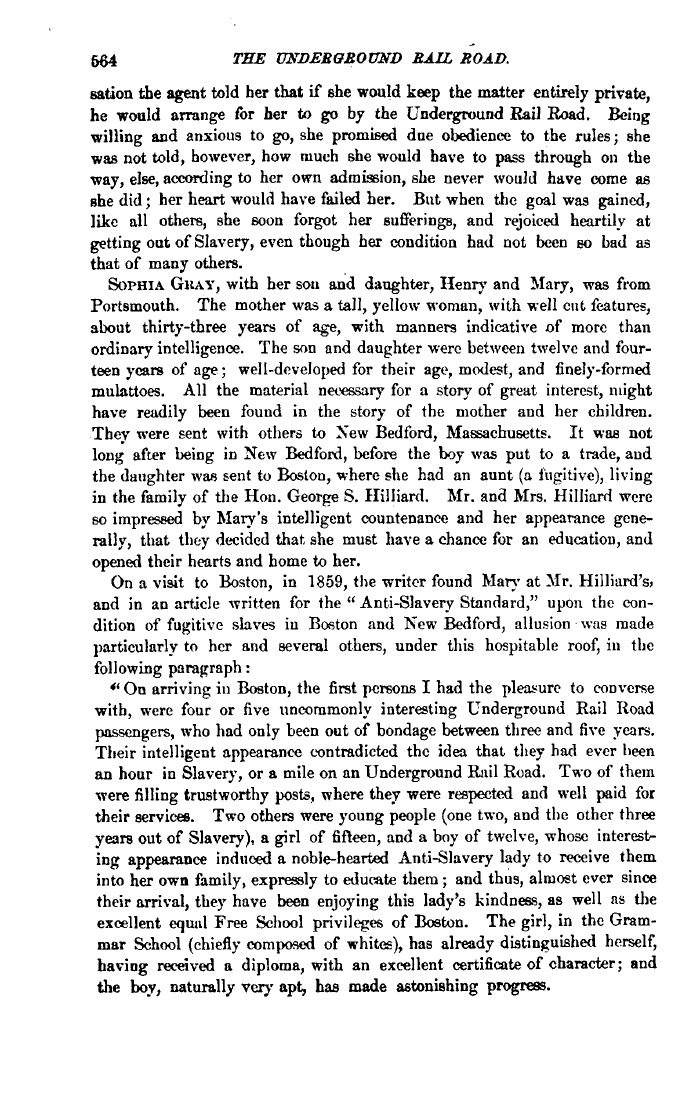 |
||||
 |
||||
| 664 THE UNDERGROUND RAIL ROAD. sation the agent told her that if she would keep the matter entirely private, he would arrange for her to go by the Underground Rail Road. Being willing and anxious to go, she promised due obedience to the rules; she was not told, however, how much she would have to pass through on the •way, else, according to her ovrn admission, she never would have come as she did; her heart would have failed her. But when the goal was gained, like all others, she soon forgot her sufferings, and rejoiced heartily at getting oat of Slavery, even though her condition had not been BO bad as that of many others. SOPHIA GKAY, with her son and daughter, Henry and Mary, was from Portsmouth. The mother was a tall, yellow woman, with well cut features, about thirty-three years of age, with manners indicative of more than ordinary intelligence. The son and daughter were between twelve and fourteen years of age; well-developed for their age, modest, and finely-formed mulattoes. All the material necessary for a story of great interest, might have readily been found in the story of the mother and her children. They were sent with others to New Bedford, Massachusetts. It was not long after being in New Bedford, before the boy was put to a trade, and the daughter was sent to Boston, where she had an aunt (a fugitive), living in the family of the Hon. George S. Hiiliard. Mr. and Mrs. Milliard were so impressed by Mary's intelligent countenance and her appearance generally, that they decided that she must have a chance for an education, and opened their hearts and home to her. On a visit to Boston, in 1859, the writer found Man- at Mr. Hilliard's> and in an article written for the " Anti-Slavery Standard," upon the condition of fugitive slaves iii Boston and New Bedford, allusion was made particularly to her and several others, under this hospitable roof, in the following paragraph: " On arriving in Boston, the first persons I had the pleasure to converse with, were four or five uncommonly interesting Underground Rail Road passengers, who had only been out of bondage between three and five years. Their intelligent appearance contradicted the idea that they had ever been an hour in Slavery, or a mile on an Underground Rail Road. Two of them were filling trustworthy posts, where they were respected and well paid for their services. Two others were young people (one two, and the other three years out of Slavery), a girl of fifteen, and a boy of twelve, whose interesting appearance induced a noble-hearted Anti-Slavery lady to receive them into her own family, expressly to educate them ; and thus, almost ever since their arrival, they have been enjoying this lady's kindness, as well as the excellent equal Free School privileges of Boston. The girl, in the Grammar School (chiefly composed of whites), has already distinguished herself, having received a diploma, with an excellent certificate of character; and the boy, naturally very apt, has made astonishing progress. |